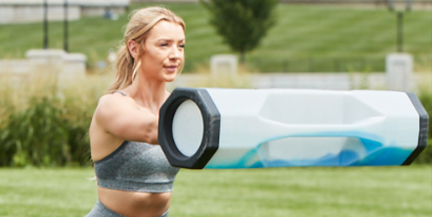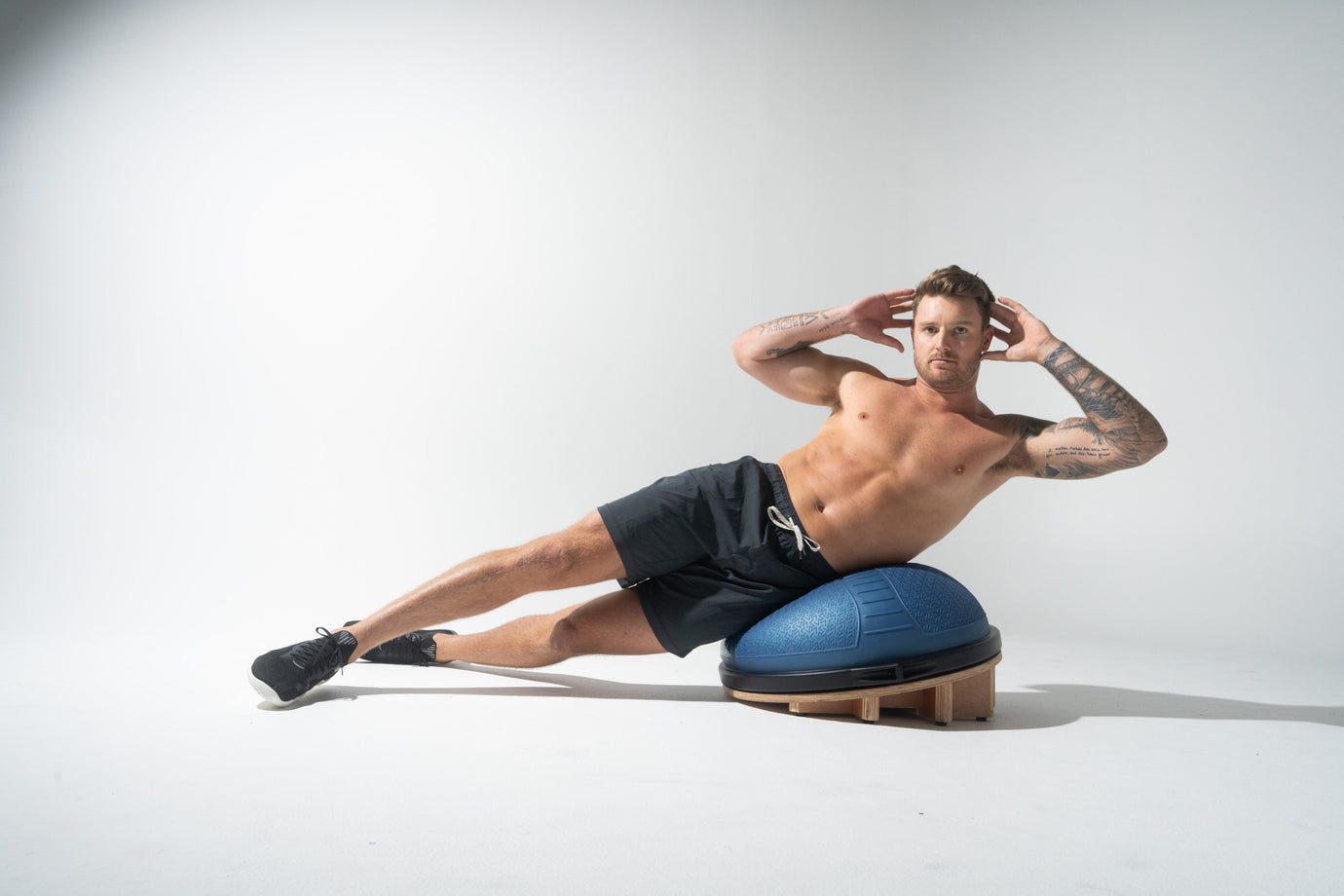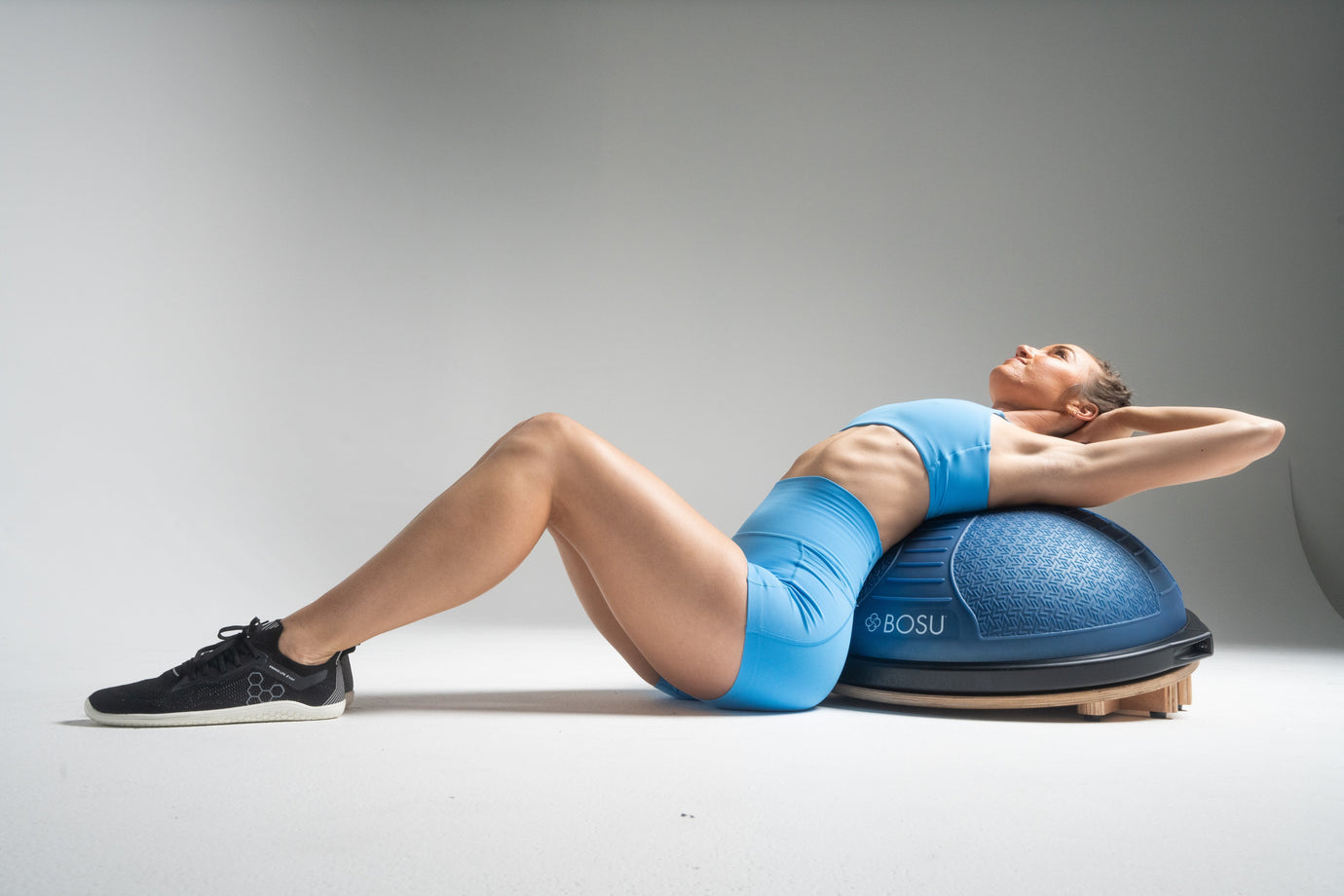Stability Training With the BOSU® Surge and BOSU® Hydro Ball

When you hit the gym, what are your training objectives? Improving strength, aerobic capacity, and body composition are common goals, but how about improving performance? This may refer to improving athletic achievement, or it may refer to moving better in activities of daily living. We all want to perform better, right?
Stability training refers the ability to maintain joint alignment for efficient movement. Adding elements of instability to various exercises will help you to train the stabilizer muscles properly and, with practice and repetition, enhance connections between the brain and movement. Reduce the risk of injury and improve movement capabilities to reach your fitness goals safely and effectively and improve performance!
There are various ways to introduce stability training into your workout, and you can integrate it with many different fitness modalities and various training tools. Have you ever considered utilizing water-filled devices to enhance your training regimen? If not, I highly recommend you give it a try. Hydro Training uses water as a constantly changing load that reacts to your body’s movements to create stabilization challenges.
My favorite tools that provide an unstable, dynamic, and variable load are the BOSU® Surge and the BOSU® Hydro Ball 25. They both use the reactive properties of water to require the core, stabilizer, and postural muscle groups to be challenged more than when training with static training tools.
The BOSU® Hydro Ball 25 can be used just like a kettlebell and the weight can be adjusted up to 25 pounds by increasing or decreasing the amount of water inside it. It is incredibly versatile and lends itself well to functional exercises that train movement versus individual muscles.
The BOSU® Surge is another excellent tool to add to your training toolbox. The long chamber facilitates the unpredictable shifting of the water inside to require your stabilizing muscles to react and engage, and the three different grip options allow for endless options for creative exercise variations that will challenge you in new ways. The amount of weight can be adjusted up to 60 pounds.
The following exercises are a few examples of how you can increase the challenge of traditional weighted exercises by utilizing these tools for a functional, fun, and challenging approach to improving your fitness and performance. Try integrating them into your training routine to enhance your results!
Melissa Weigelt, MS, is a BOSU® Master Trainer and owner at Flow Fitness Training, where she develops and presents a variety of continuing education programs for fitness instructors.
BOSU® Surge Rack Plyo Squat
The quads, hamstrings, and glutes are the major muscle groups involved in this exercise and the abductors work to stabilize the hips and thighs. Start standing holding the Surge at shoulders in rack position. Flex at hips and knees to lower into squat position. Extend at hips and knees and jump up. Land with soft knees. Progression: Increase Range of Motion (ROM). Regression: Execute the exercise without the jump.BOSU® Hydro Ball 25 Single Arm Overhead Shoulder Press
The overhead press is a traditional exercise that primarily utilizes the deltoids and triceps to flex the shoulders and extend the elbow and the trapezius and core muscles engage to stabilize the shoulders and spine. Begin standing with Hydro Ball in rack position at shoulder. Press Hydro Ball overhead. Return to starting position. Progression: Do the exercise standing on one leg. Regression: Reduce the amount of water in the Hydro Ball.BOSU® Hydro Ball 25 Supine Pullover
The pullover targets your pectoralis and latissimus dorsi muscles and the core muscles are utilized to maintain a neutral spine position. Start in supine position with feet off floor and knees over hips. Hold Ball with a 2-hand 2-handle grip with elbows extended. Bend elbows slightly and reach ball overhead while extending legs. Return to starting position. Progression: Keep elbows straight. Regression: Do the exercise with feet on the floor.BOSU® Surge Close Grip Bench Press
The Pectoralis and triceps muscle groups are the primary movers for this exercise and the rear deltoids work to stabilize the shoulder joint during the lowering phase of the movement. Begin in supine position with knees bent and feet on floor holding the Surge with a neutral grip above chest. Bend elbows and lower Surge until elbows reach the ribcage. Return to starting position. Progression: Make the movement explosive so that the water crashes inside the Surge. Regression: Reduce the amount of water in the Surge.BOSU® Surge Unilateral Deadlift
The hamstrings and glutes are the prime movers and the calves and ankle stabilizers, as well as the core muscles, work to provide stability. Begin standing holding the long handle of the Surge at right side. Shift weight to right foot and hinge at hips while extending left leg until parallel to floor. Return to starting position. Keep hips level. Keep water “quiet” inside Surge. Repeat second set on other side. Progression: Pause in hinged position for a few seconds before returning to starting position. Regression: Keep left toes on floor throughout movement.Melissa Weigelt, MS, is a BOSU® Master Trainer and owner at Flow Fitness Training, where she develops and presents a variety of continuing education programs for fitness instructors.



